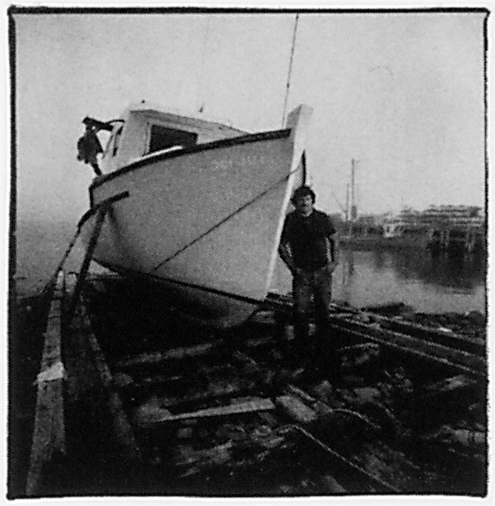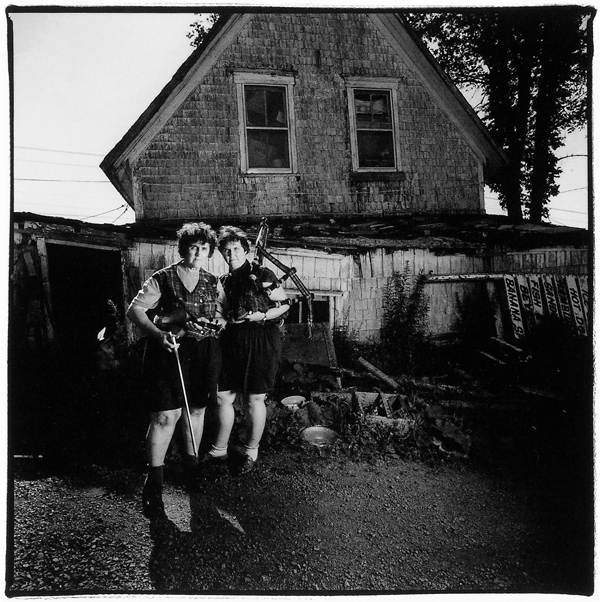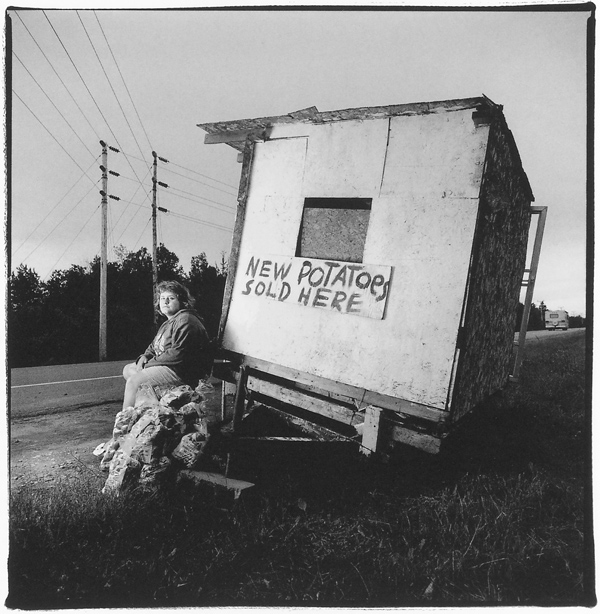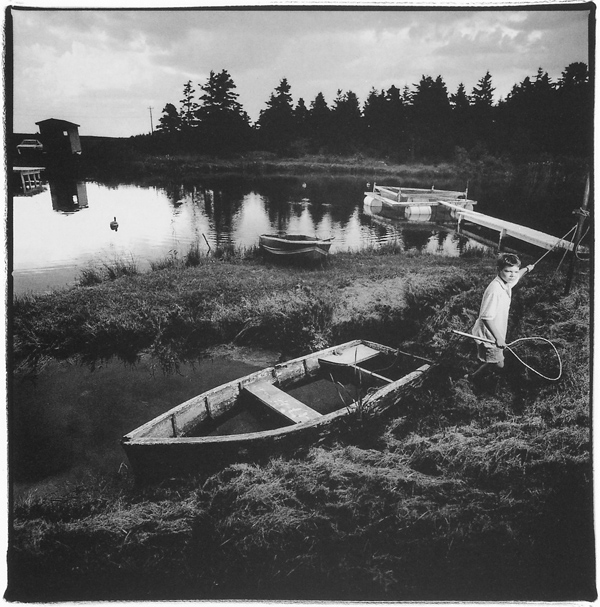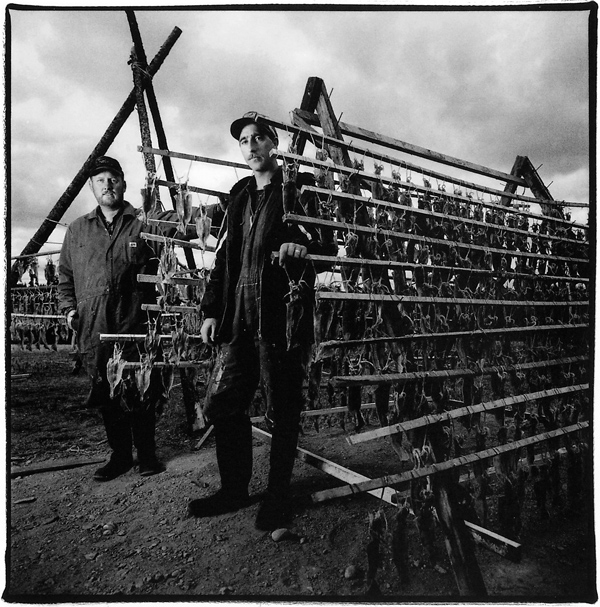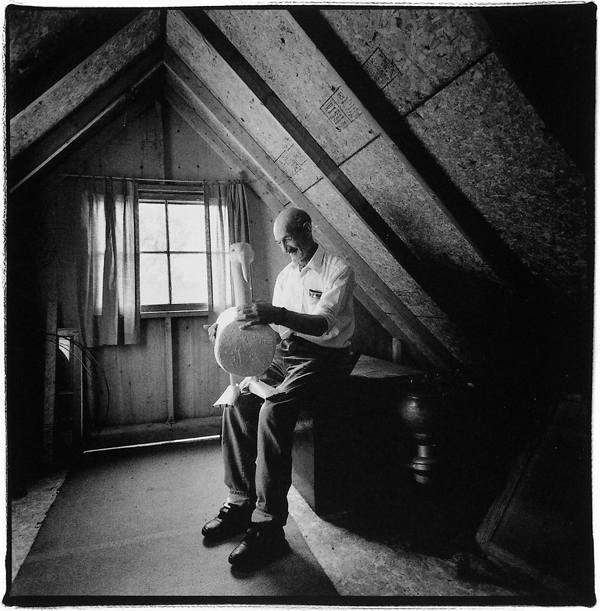[Winter 1995-1996]
by Mona Hakim
Looking at Ron Levine’s photographs, I was reminded of a New York photographer’s humorous group portraits that appeared several years ago in the magazine Photo.
These photographs of members of a wide variety of leagues and associations manifested a typically American mania for transfiguring ordinary people into celebrities. In mobilizing for the exclusive purpose of photography the connections among a group that rarely gets together otherwise, the photographer also became the primary and principal witness to this event. Life, an avid promulgator of the cult of the star, also paid particular attention to this type of representation. In the valorization of their subjects, these magazine photos seemed to me to coincide with Ron Levine’s work, which is that of a hagiographer who, over many extended stays in rural settings, has captured and immortalized on film what seem to be the last survivors of the industrial era. However, the comparison stops here, for Levine’s intimate portraits contrast with the flashier ones of his predecessors, and this difference is an eloquent example of the shift in the tradition of social documentary toward a more subjective realism.
Kinship of the Great Eastern is the result of a trip of more six weeks that Levine took through villages and along isolated roads in the Maritimes. It is the sequel to South of the Mason-Dixon (1994), a series of photographs taken in peripheral and rural areas of the American South. Usually framed in isolation, the fishermen, craftsmen, or farmers, aside from their precarious ways of making a living, were selected mainly for their immediate environment: farm, workshop, modest home – an environment rendered almost theatrical by the slight distortion of the image created by a wide-angle lens and the placement of artificial light in tandem with the natural light. In its focus on the subjects, the auxiliary lighting creates a sort of aura that makes their presence more dramatic. And their presence is crucial as one travels through a world that has become almost marginal and is even probably doomed to oblivion.
Aware of their insecure situation, these Maritimers face the camera proudly, letting themselves be seduced by it, “posing,” knowing very well that this is a special moment within their anonymous and all too uneventful lives. Meanwhile, the photographer plays witness to this creation of a memory, capturing the dignity, strength, and patriotism that imbue these people. Against the background of their dwelling, land, or workshop, they bask in the luminous aura projected around them as if it were a halo. This happy diversion is “brought into the light” by the primary observer of the scene, the photographer.
Here, the artist’s investment in the subject he has photographed enters the balance – not simply the technical investment (heavy equipment and assistant required for travelling, long highway drives), but especially the emotional investment involved in communicating with people one doesn’t know, many of them living in isolation. It necessitates an indispensable sense of complicity, the dissipation of mistrust, an unannounced intervention in the life of another. Once a connection is established, what follows is a dance between the artist and the model, in which the latter takes his or her own place within the frame, dictating almost entirely the camera’s movements and angles.
By cloaking in a quasi-solemn aura the manifest determination of these communities to preserve what they have achieved, Ron Levine commits himself to offering them their share of posterity and capturing on film both the signs of an uncertain future and a desire for survival. Are these not well-established acts of subjectivism?
Ron Levine, a graduate of the Ryerson Polytechnical Institute in Toronto, is a “wandering photographer”, and his work bears some resemblance to travel diaries. South of the Mason-Dixon was presented at Galerie Vox, in Montreal, in the autumn of 1994. The images in the portfolio presented here are taken from his Maritime Highways series. In November, his recent photographs from Poland will be on exhibit at Berlin’s Bethanien Kunsthaus gallery.
Mona Hakim, a critic and essayist, specializes in Quebec contemporary art. A sought-after curator and speaker, she also contributes to many Canadian contemporary-art publications.

